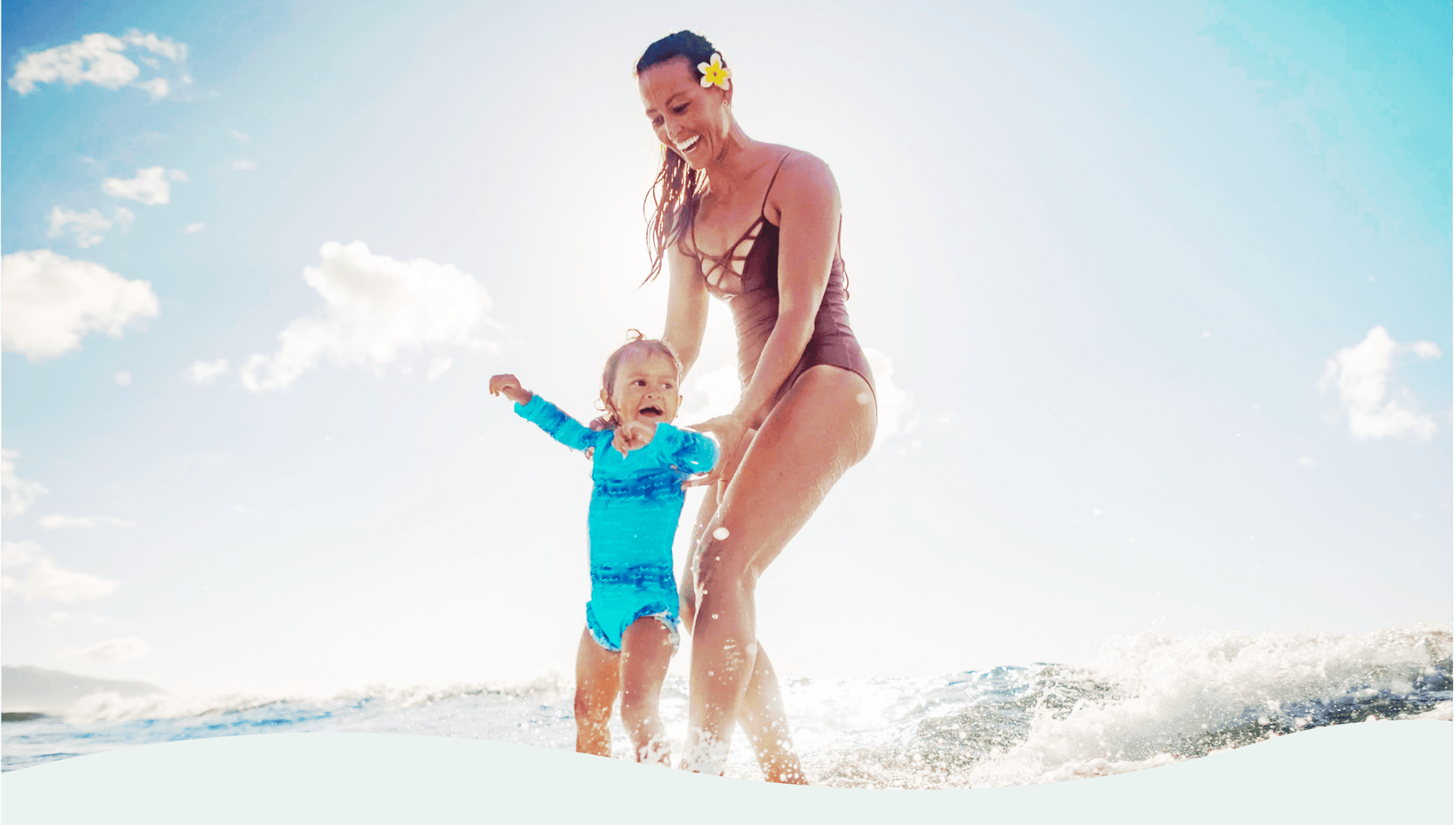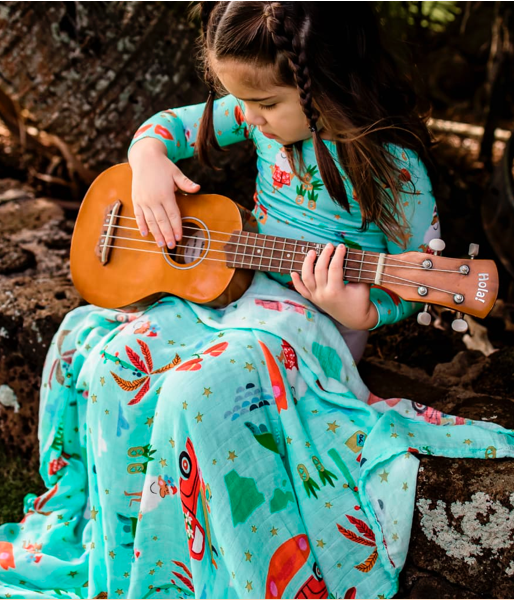This World Down Syndrome Day, we want to celebrate by taking the time to help parents better understand how to teach their children about disabilities.
We asked Sheryl, mom of Ka’imi (AKA) Boogie, to help us with this. Boogie is a dancing, music-loving, energetic keiki (child) who also has Down Syndrome. Throughout the years, Sheryl has learned a lot about how best to talk to children about disabilities, and the importance of inclusivity and empathy when having this conversation.
We are so grateful to Sheryl for taking the time to share her experience and expertise with us. Keep reading for some advice from Sheryl when you’re beginning to teach your children about disabilities, and be sure to follow her and Boogie on Instagram @mamabyrd227 to learn more about their journey.
How do we talk to our children about disabilities?
This is a question I get a lot.
“Billy has a new friend in class, they are just so cute. How do I talk to my child about their differences?”
My go to answer used to be: “kids are so loving and open, I suggest just let them be kids and have fun with each other.” But, I have since learned this is actually harmful in the long run.
Sure in most cases little Billy will see Boogie as another kid at the park, but as he gets older and his disability gets more visible, the differences become more evident and Billy will start asking questions.
But this is where it begins, the moment we often teach our kids to ignore the “differences” and pretend they don’t exist. When we do this, we devalue anyone that is disabled and confuse the child. Instead, let's talk about these things in a respectful way and see what we can learn.
Address your child’s curiosity mindfully, and to the best of your ability answer their questions. Never make assumptions. Encourage them to act as they would with anyone else. Smile, say hi, but PLEASE don’t pretend the disability doesn’t exist.

Talking openly about differences shows kids there’s nothing to be ashamed of
Some differences are just that: different. So, try to find a fun spin to the difference.
What makes the difference unique and cool? Sometimes difference can point to ability or non ability. Boogie can’t talk. Rather than saying “Oh Honey, Boogie can’t help it”, or “Boogie doesn’t know how to talk”, this is a perfect time to open up some dialogue that can help your child identify strengths and weaknesses.
“What is Boogie good at?” He LOVES to dance and listen to music. After, find a few weaknesses. Ask, “What is hard for him?” He has a hard time expressing what he wants.
Then ask your child “what are you good at?” (Fishing), “ What is hard for you?” (Sitting in circle time). This will teach your child both empathy and understanding when they see that we all have strengths and weaknesses.
Don’t STOP there though, keep the dialogue going. You can ask “How do you think Boogie feels when the teachers don’t understand him?” “How do you feel when you can’t sit still in circle time?” This will help your child to identify strategies to overcome these challenges.
“How is Boogie working on talking with the teacher?” (Signing yes). “Are there ways you might be able to help Boogie?”
“How are you working to sit in circle time?”
Pointing out that everyone is working to overcome challenges will help your child identify strengths and resilience in others and themselves.
Remember, everyone is different in some way, if we were all the same life would be so boring!
Kids with disabilities are also the same as other kids
Talk to them about the things your child and the child with disabilities have in common. What do you think they like to play with? What kind of music do they listen to? What is their favorite toy? These questions will help to clearly identify similarities, as well as encourage empathy.
Yes, some children have disabilities, but they don’t want to be defined by it.

People with disabilities aren’t sick
It can be hard to come up with the right words to describe to your child about a disability. Let's just start with please don’t say they are “sick” or “wrong”.
Example: “That little one has a sickness that makes it harder for him to talk to people.” Or “Something is wrong with her brain, so she can’t talk as well as you.”
Some people are born with their disability, and others happen due to an accident or illness. The disability itself is NOT a sickness or something that is bad, and it isn’t something that can be caught. It is important to make this distinction when explaining disabilities to children.
Words matter
Let’s start with: can we all pledge to not use the “r” word. You can visit “spread the word to end the word” to learn more.
Let’s teach our children the right words when talking about our differences and disabilities. Such as using the actual name of the disability: Down syndrome, Autism.
Don’t be afraid to use the word disabled.
Kids learn and think differently, so it's important to talk openly about differences. Talking about it shows them that there’s nothing to be embarrassed about when talking about differences.
Exposure matters
There are many great books and shows about disabilities. You can do a search and find that some of your child’s favorite shows have an episode or two with children of disabilities in it. It’s important to read books that include all types of people, here are some of our favorite books:
More Than a Wheelchair by Erica Burrell
A friend Like Alina by Meeka Caldwell
Just Ask by Sonia Sotomayor
Hannah Down Syndrome Super Power by Lori Leigh Yarborough
47 Strings Tessa Special Code by Becky Cary
Eli Included by Michelle Sullivan
Exposure matters. The more your child sees all types of differences, the more normal it becomes for your child. Find programs where your child can be exposed to people of disabilities — (Best Buddies is one of our favorite programs!)

Lastly (and probably the most important) it starts with YOU.
Our children look to us for guidance, they see how we interact with others. Before we begin to talk with our children, let's examine our own responses to those with disabilities.
Historically, people with disabilities were ostracized in the communities and mocked for entertainment purposes. Those with disabilities were largely institutionalized and segregated from the rest of the population. It wasn’t until the Disability Rights Movement in the 1970s that lawmakers began to pass legislation that supported and protected individuals with disabilities. And it wasn’t until 1990 that the Americans With Disabilities Act was passed.
Because of this history, the likelihood of your exposure to someone with a disability might be limited to none. There is still a societal stigma of sorts that instills fear in people with disabilities. But the fear is only the fear of the unknown.
Remember, the longer we stay silent and ignore differences the longer the stigma exists.
It starts with you. We all make a difference.
Be the change and spread love.
If you’d like to learn more about Sheryl’s experiences, check out a previous blog from Sheryl about how to make new parents of children with Down Syndrome feel welcomed and supported.









